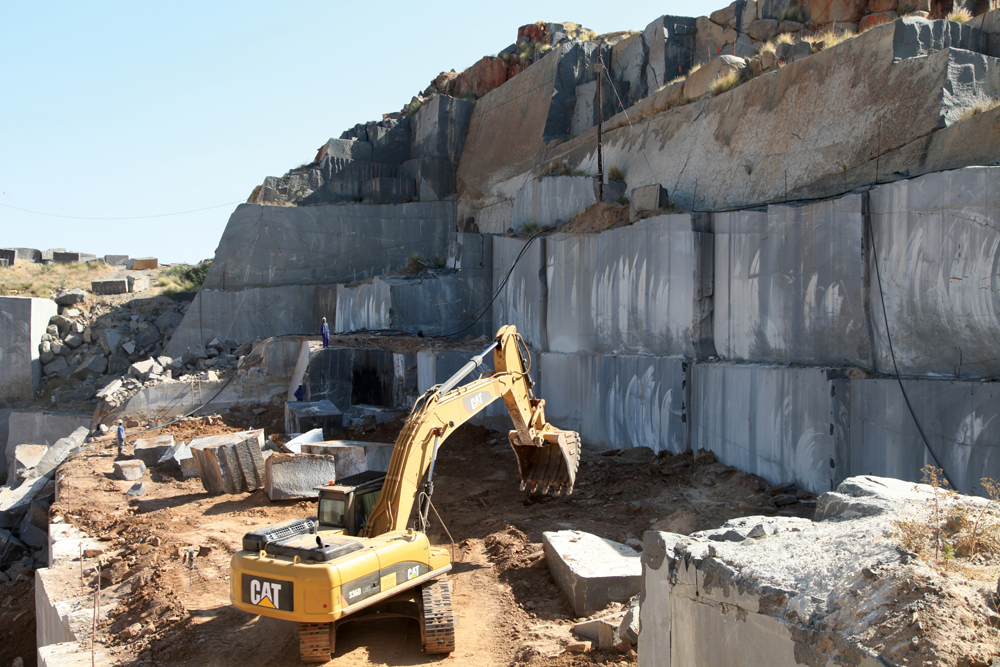Exploring Granite Quarries in South Africa Market: From Quarry to Work of art
Exploring Granite Quarries in South Africa Market: From Quarry to Work of art
Blog Article
Unearthing the Rich Background and Lasting Practices of Granite Quarrying
As we base on the precipice of discovering the elaborate tapestry of granite quarrying, a journey with time discloses not simply the physical act of drawing out rock but additionally the social and historic value woven right into the very fabric of this practice. From the ancient origins that laid the foundation for contemporary quarrying methods to the lasting techniques that are shaping the future of this industry, each carve mark on granite surface areas narrates waiting to be uncovered (granite quarries in south africa). The heritage of granite quarrying stretches far beyond mere removal; it is a testimony to human ingenuity, durability, and the enduring attraction of this stunning rock
Old Beginnings of Granite Quarrying
Dating back to ancient civilizations, the practice of quarrying granite has been an important part of human background and building advancement. The earliest evidence of granite quarrying days back to ancient Egypt, where huge pyramids and elaborate sculptures were crafted from this durable stone. The Egyptians utilized primitive devices to extract granite blocks from quarries, showcasing the importance of this material in their huge building and constructions.
Progressing in background, the Greeks also made significant contributions to the quarrying of granite. The Greeks utilized granite in various building marvels, such as holy places and statues, showing their skill in shaping and carving this durable rock. The Romans further refined the techniques of quarrying granite, using sophisticated tools like blades and hammers to remove and shape granite for their iconic structures.
With the centuries, the method of quarrying granite has actually evolved, with modern innovations enhancing efficiency while maintaining the classic appeal of this all-natural stone - granite quarries in south africa. From old human beings to contemporary building contractors, the legacy of granite quarrying proceeds to form our globe
Advancement of Quarrying Strategies
The evolution of quarrying methods has actually been marked by a continuous development in the direction of better performance and accuracy in extracting granite. From the basic methods employed by our forefathers to the sophisticated modern technologies utilized in modern-day quarrying procedures, the sector has actually gone through considerable developments. Early quarrying strategies entailed manual work with basic tools such as chisels, hammers, and wedges to extract granite blocks from the planet. As worlds progressed, methods like fire-setting and primitive nitroglycerins were presented to promote the extraction process.
In even more recent times, the arrival of machinery transformed the quarrying sector, allowing faster extraction prices and enhanced performance. Technologies such as ruby wire saws, high-pressure water jets, and pneumatic drills have become basic in modern-day quarries, permitting exact cutting and lowered waste. Additionally, improvements in computer-controlled tools and 3D modeling have enhanced quarrying operations, causing marginal environmental effect and boosted sustainability methods. As the demand for granite continues to climb, the evolution of quarrying techniques stays essential to meeting market needs effectively and sustainably.
Cultural Value of Granite
Granite holds an extensive cultural relevance across various people due to its long-lasting existence in building work of arts and revered monoliths. The social relevance of granite extends beyond its physical attributes; it personifies strength, stability, and eternity, making it a symbol of enduring traditions and practices.

Lasting Practices in Quarrying
In the middle of the abundant history of granite quarrying and its social significance exists an expanding emphasis on sustainable methods within the market. As ecological awareness and concerns about resource exhaustion have heightened worldwide, the quarrying industry has progressively embraced sustainable methods to reduce its influence on the atmosphere and surrounding neighborhoods.

In addition, improvement and rehab of quarry sites post-extraction are important to lasting practices. By restoring quarried areas to an all-natural or valuable state, such as producing wildlife environments or recreational areas, quarriers can offset the ecological impact of their procedures and contribute resource positively to the local environment.
Heritage of Granite Quarrying
With a historic background soaked in craftsmanship and industrial progression, what enduring impact has granite quarrying left on the landscape of modern-day culture? The tradition of granite quarrying transcends why not try these out simple extraction methods; it has actually formed building marvels, city landscapes, and social heritage worldwide. The long lasting nature of granite has made it a preferred option for monuments, structures, and facilities, standing as a testament to the skill and artistry of quarry workers across generations.
In addition, the economic footprint of granite quarrying can not be ignored. The sector continues to supply employment chances and drive neighborhood economic climates in areas where granite extraction is common. It has also spurred technological advancements in quarrying methods and equipment, resulting in more efficient and sustainable techniques.
In terms of sustainability, the heritage of granite quarrying consists of initiatives to reduce environmental influences via recovery jobs and responsible resource management. By balancing economic interests with ecological stewardship, the market aims to guarantee that future generations can continue to benefit from this long-lasting natural deposit.
Verdict

Report this page